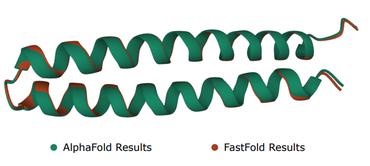Deep Supervised and Convolutional Generative Stochastic Network for Protein Secondary Structure Prediction
Predicting protein secondary structure is a fundamental problem in protein structure prediction. Here we present a new supervised generative stochastic network (GSN) based method to predict local secondary structure with deep hierarchical representations. GSN is a recently proposed deep learning technique (Bengio & Thibodeau-Laufer, 2013) to globally train deep generative model. We present the supervised extension of GSN, which learns a Markov chain to sample from a conditional distribution, and applied it to protein structure prediction. To scale the model to full-sized, high-dimensional data, like protein sequences with hundreds of amino acids, we introduce a convolutional architecture, which allows efficient learning across multiple layers of hierarchical representations. Our architecture uniquely focuses on predicting structured low-level labels informed with both low and high-level representations learned by the model. In our application this corresponds to labeling the secondary structure state of each amino-acid residue. We trained and tested the model on separate sets of non-homologous proteins sharing less than 30% sequence identity. Our model achieves 66.4% Q8 accuracy on the CB513 dataset, better than the previously reported best performance 64.9% (Wang et al., 2011) for this challenging secondary structure prediction problem.
PDF Abstract

